Nokia 2012 Annual Report Download - page 54
Download and view the complete annual report
Please find page 54 of the 2012 Nokia annual report below. You can navigate through the pages in the report by either clicking on the pages listed below, or by using the keyword search tool below to find specific information within the annual report.-
 1
1 -
 2
2 -
 3
3 -
 4
4 -
 5
5 -
 6
6 -
 7
7 -
 8
8 -
 9
9 -
 10
10 -
 11
11 -
 12
12 -
 13
13 -
 14
14 -
 15
15 -
 16
16 -
 17
17 -
 18
18 -
 19
19 -
 20
20 -
 21
21 -
 22
22 -
 23
23 -
 24
24 -
 25
25 -
 26
26 -
 27
27 -
 28
28 -
 29
29 -
 30
30 -
 31
31 -
 32
32 -
 33
33 -
 34
34 -
 35
35 -
 36
36 -
 37
37 -
 38
38 -
 39
39 -
 40
40 -
 41
41 -
 42
42 -
 43
43 -
 44
44 -
 45
45 -
 46
46 -
 47
47 -
 48
48 -
 49
49 -
 50
50 -
 51
51 -
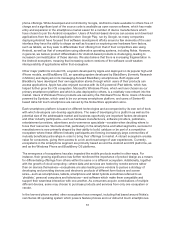 52
52 -
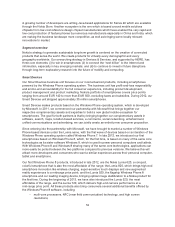 53
53 -
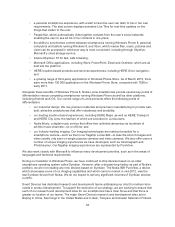 54
54 -
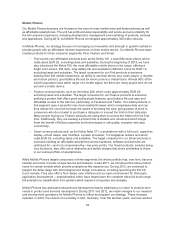 55
55 -
 56
56 -
 57
57 -
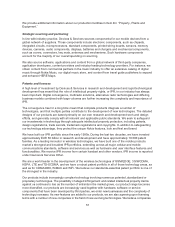 58
58 -
 59
59 -
 60
60 -
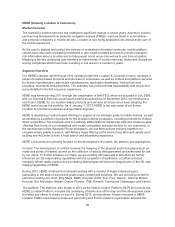 61
61 -
 62
62 -
 63
63 -
 64
64 -
 65
65 -
 66
66 -
 67
67 -
 68
68 -
 69
69 -
 70
70 -
 71
71 -
 72
72 -
 73
73 -
 74
74 -
 75
75 -
 76
76 -
 77
77 -
 78
78 -
 79
79 -
 80
80 -
 81
81 -
 82
82 -
 83
83 -
 84
84 -
 85
85 -
 86
86 -
 87
87 -
 88
88 -
 89
89 -
 90
90 -
 91
91 -
 92
92 -
 93
93 -
 94
94 -
 95
95 -
 96
96 -
 97
97 -
 98
98 -
 99
99 -
 100
100 -
 101
101 -
 102
102 -
 103
103 -
 104
104 -
 105
105 -
 106
106 -
 107
107 -
 108
108 -
 109
109 -
 110
110 -
 111
111 -
 112
112 -
 113
113 -
 114
114 -
 115
115 -
 116
116 -
 117
117 -
 118
118 -
 119
119 -
 120
120 -
 121
121 -
 122
122 -
 123
123 -
 124
124 -
 125
125 -
 126
126 -
 127
127 -
 128
128 -
 129
129 -
 130
130 -
 131
131 -
 132
132 -
 133
133 -
 134
134 -
 135
135 -
 136
136 -
 137
137 -
 138
138 -
 139
139 -
 140
140 -
 141
141 -
 142
142 -
 143
143 -
 144
144 -
 145
145 -
 146
146 -
 147
147 -
 148
148 -
 149
149 -
 150
150 -
 151
151 -
 152
152 -
 153
153 -
 154
154 -
 155
155 -
 156
156 -
 157
157 -
 158
158 -
 159
159 -
 160
160 -
 161
161 -
 162
162 -
 163
163 -
 164
164 -
 165
165 -
 166
166 -
 167
167 -
 168
168 -
 169
169 -
 170
170 -
 171
171 -
 172
172 -
 173
173 -
 174
174 -
 175
175 -
 176
176 -
 177
177 -
 178
178 -
 179
179 -
 180
180 -
 181
181 -
 182
182 -
 183
183 -
 184
184 -
 185
185 -
 186
186 -
 187
187 -
 188
188 -
 189
189 -
 190
190 -
 191
191 -
 192
192 -
 193
193 -
 194
194 -
 195
195 -
 196
196 -
 197
197 -
 198
198 -
 199
199 -
 200
200 -
 201
201 -
 202
202 -
 203
203 -
 204
204 -
 205
205 -
 206
206 -
 207
207 -
 208
208 -
 209
209 -
 210
210 -
 211
211 -
 212
212 -
 213
213 -
 214
214 -
 215
215 -
 216
216 -
 217
217 -
 218
218 -
 219
219 -
 220
220 -
 221
221 -
 222
222 -
 223
223 -
 224
224 -
 225
225 -
 226
226 -
 227
227 -
 228
228 -
 229
229 -
 230
230 -
 231
231 -
 232
232 -
 233
233 -
 234
234 -
 235
235 -
 236
236 -
 237
237 -
 238
238 -
 239
239 -
 240
240 -
 241
241 -
 242
242 -
 243
243 -
 244
244 -
 245
245 -
 246
246 -
 247
247 -
 248
248 -
 249
249 -
 250
250 -
 251
251 -
 252
252 -
 253
253 -
 254
254 -
 255
255 -
 256
256 -
 257
257 -
 258
258 -
 259
259 -
 260
260 -
 261
261 -
 262
262 -
 263
263 -
 264
264 -
 265
265 -
 266
266 -
 267
267 -
 268
268 -
 269
269 -
 270
270 -
 271
271 -
 272
272 -
 273
273 -
 274
274 -
 275
275 -
 276
276 -
 277
277 -
 278
278 -
 279
279 -
 280
280 -
 281
281 -
 282
282 -
 283
283 -
 284
284
 |
 |
• a personal smartphone experience, with a start screen the user can tailor to his or her own
requirements. The start screen displays animated Live Tiles for real-time updates on the
things that matter to the user;
• PeopleHub, which automatically links together contacts from the user’s social networks,
enabling the user to see all his or her contacts in one place;
• the ability to synchronize content between smartphones running Windows Phone 8, personal
computers and tablets running Windows 8, and Xbox, which means files, music, pictures and
video can be accessed in whichever way is most convenient, including through Skydrive,
Microsoft’s cloud storage service.
• Internet Explorer 10 for fast, safe browsing;
• Microsoft Office applications, including Word, PowerPoint, Excel and OneNote, which are all
built into the platform;
• HERE location-based products and services experiences, including HERE Drive navigation;
and
• a growing range of third-party applications in Windows Phone Store. As of March 2013, there
were more than 130 000 applications in the Windows Phone Store, compared with 7000 in
early 2011.
Alongside these benefits of Windows Phone 8, Nokia Lumia smartphones provide several key points of
differentiation versus competing smartphones running Windows Phone as well as other platforms,
including Android and iOS. Our current range of Lumia products offers the following points of
differentiation:
•our industrial design. We use premium materials and precision manufacturing to provide well-
built, attractive smartphones that offer robustness and durability;
•our leading location-based experiences, including HERE Maps, as well as HERE Transport
and HERE City Lens, the last two of which are exclusive to Lumia users.
•Nokia Music, a digital music service that offers free unlimited streaming via hundreds of
ad-free music channels—on or off-line; and
•our industry-leading imaging. Our imaging technologies are making it possible for a
smartphone camera—such as that in our flagship Lumia 920—to take the kind of images and
video usually only seen on single purpose cameras and video cameras. We also offer users a
number of unique imaging experiences we have developed, such as Cinemagraph and
Photobeamer. Our flagship imaging experiences are represented by PureView.
We also work closely with Microsoft to influence many development priorities, such as in the areas of
languages and technical requirements.
During our transition to Windows Phone, we have continued to ship devices based on an older
smartphone operating system called Symbian. However, after a decade-long history as part of Nokia’s
portfolio, we are not creating any new devices based on Symbian. The Nokia 808 PureView, a device
which showcases some of our imaging capabilities and which came to market in mid-2012, was the
last Symbian device from Nokia. We do not expect to sell any significant volumes of Symbian devices
in 2013.
Smart Devices has dedicated research and development teams addressing our short to medium-term
needs in product development. To support the execution of our strategy, we are working to ensure that
each of our research and development sites for our smartphones has a clear focus and that there is
greater co-location of our teams. The major Smart Devices research and development sites are in
Beijing in China, San Diego in the United States and in Salo, Tampere and Greater Helsinki in Finland.
53
